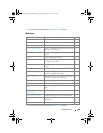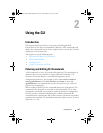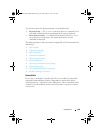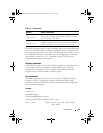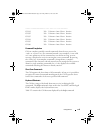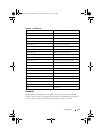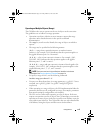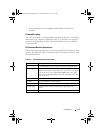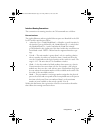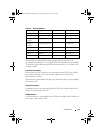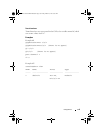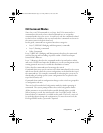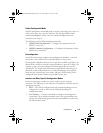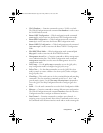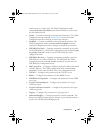
Using the CLI 174
Interface Naming Conventions
The conventions for naming interfaces in CLI commands are as follows:
Ethernet Interfaces
The gigabit Ethernet and ten-gigabit Ethernet ports are identified in the CLI
by the variable
unit/slot/port
, where:
•
<Interface Type> Unit#/Slot#/Port# — Identifies a specific interface by
the interface type tag followed by the Unit# followed by a / symbol, then
the Slot# followed by a / symbol, and then the Port#.
For example,
gi
2/0/10
identifies the gigabit port 10 in slot 0 within the second unit on
a non-blade switch. Table 2-4 below lists the supported interface type
tags.
•
Unit
# — The unit number is greater than 1 only in a stacking solution
where a number of switches are stacked to form a virtual switch. In this
case, the Unit# indicates the logical position of the switch in a stack. The
range is 1–12. The unit value is 1 for standalone switches.
•
Slot
# — Is the slot number for blade products that connect to a chassis.
Certain interfaces have more than one slot. For example, a 10G plug-in
module may have two slots, each with two ports. Slot numbers range from
0 to one minus the maximum number of slots available on the switch. The
slot value is 0 for non-blade switches.
•
Port
# — The port number is an integer number assigned to the physical
port on the switch and corresponds to the lexan printed next to the port on
the front or back panel. Ports are numbered from 1 to the maximum
number of ports available on the switch, typically 24 or 48.
Within this document, the tag interface–id refers to an interface identifier
that follows the naming convention above.
2CSPC4.X8100-SWUM102.book Page 174 Friday, March 15, 2013 8:56 AM



